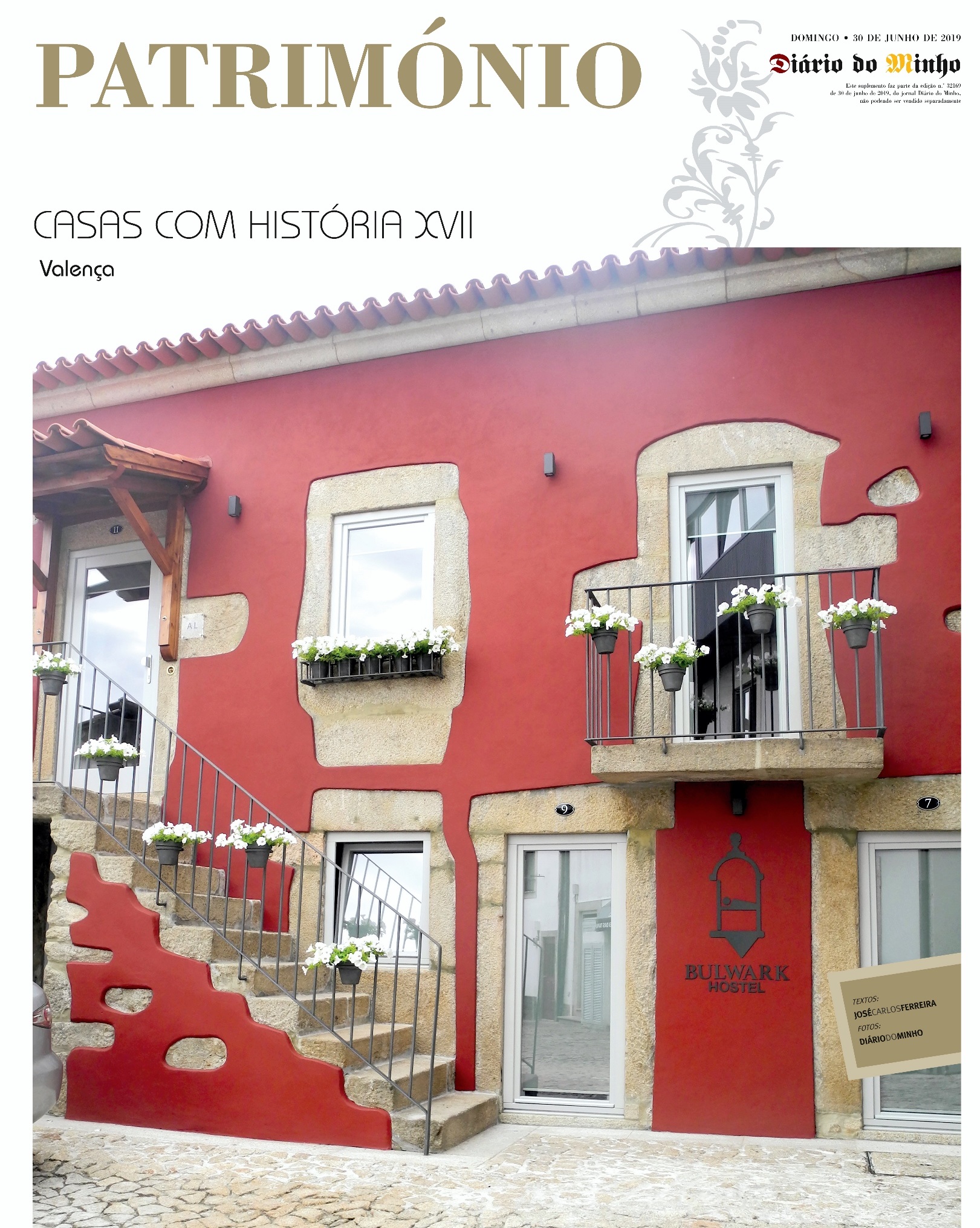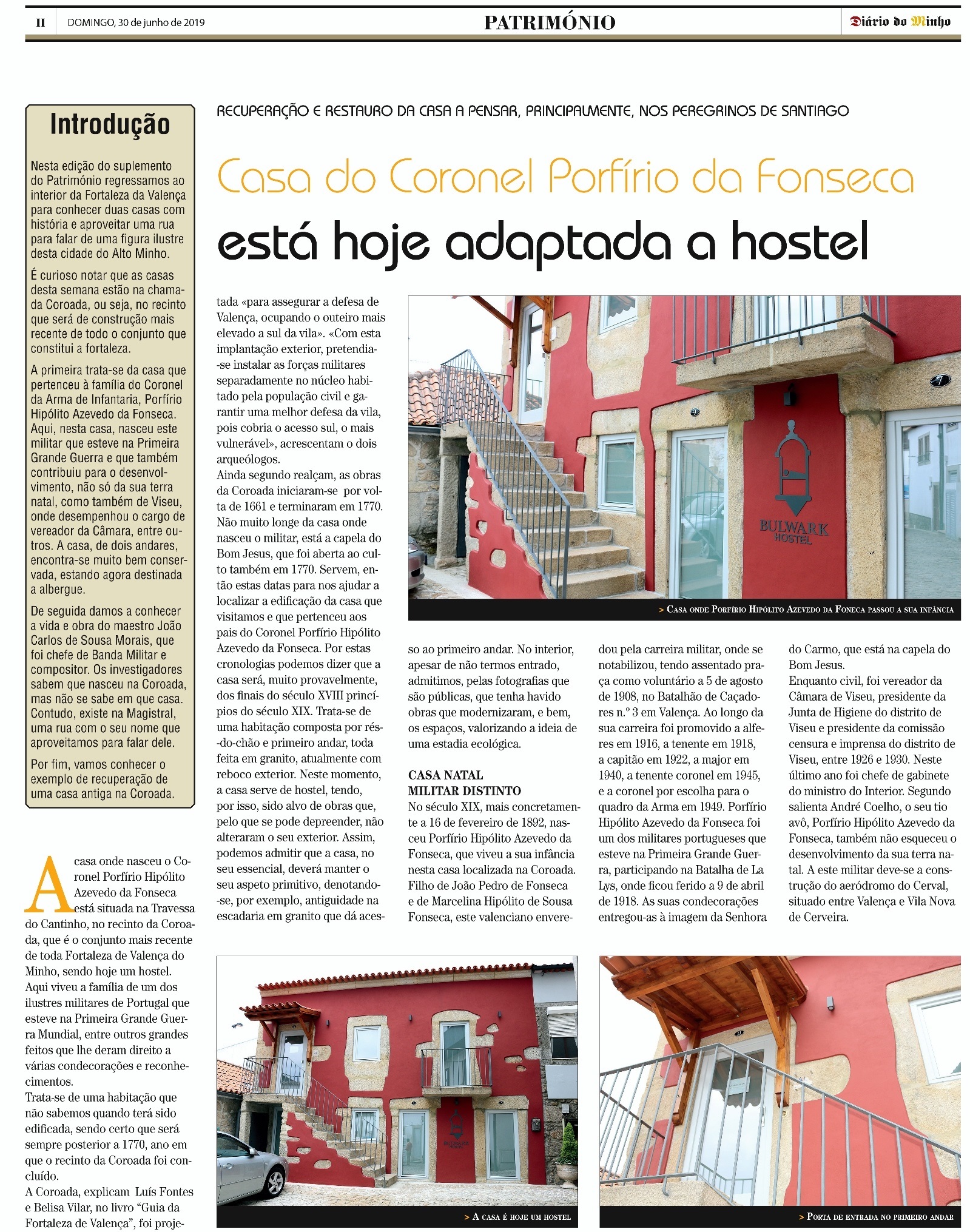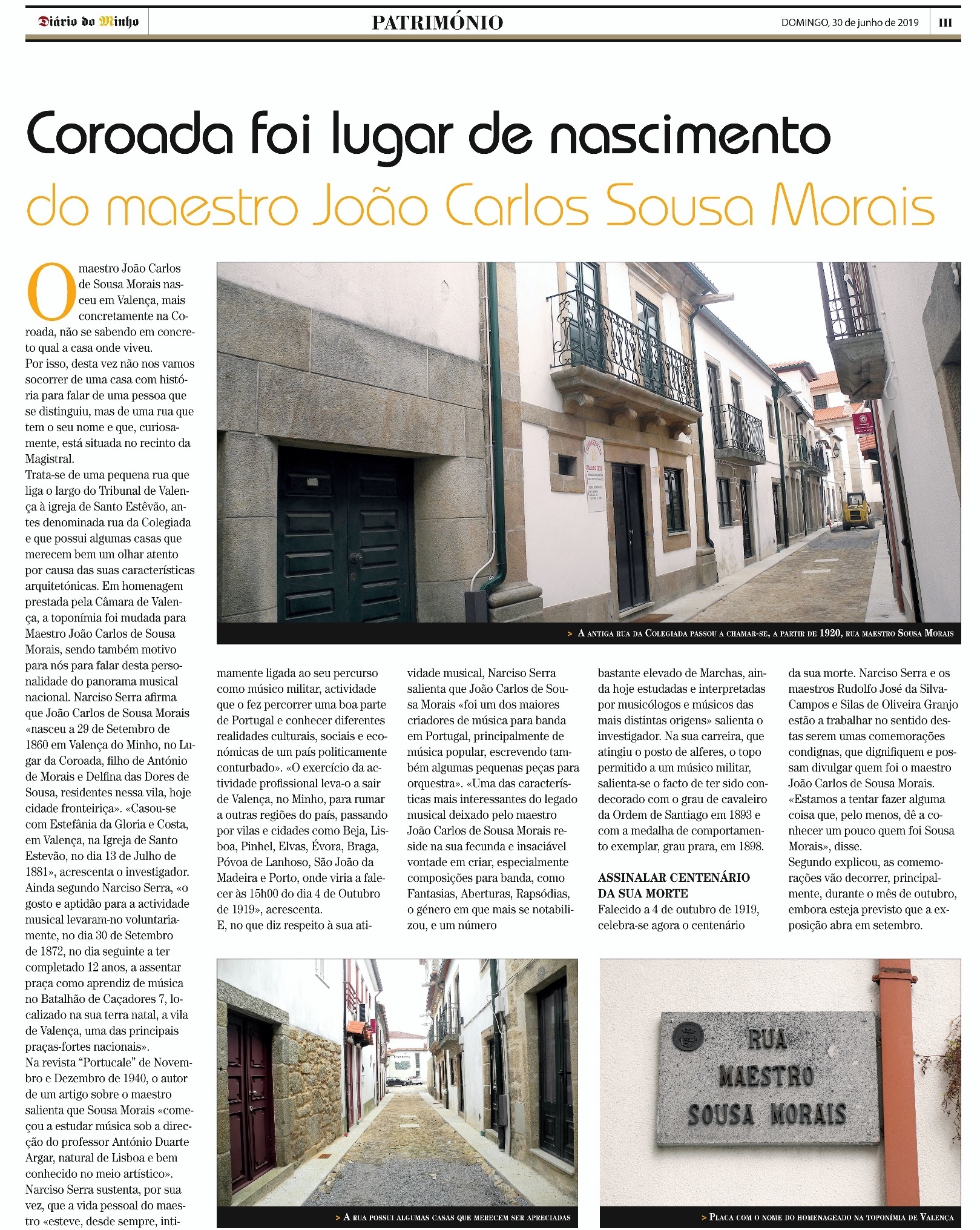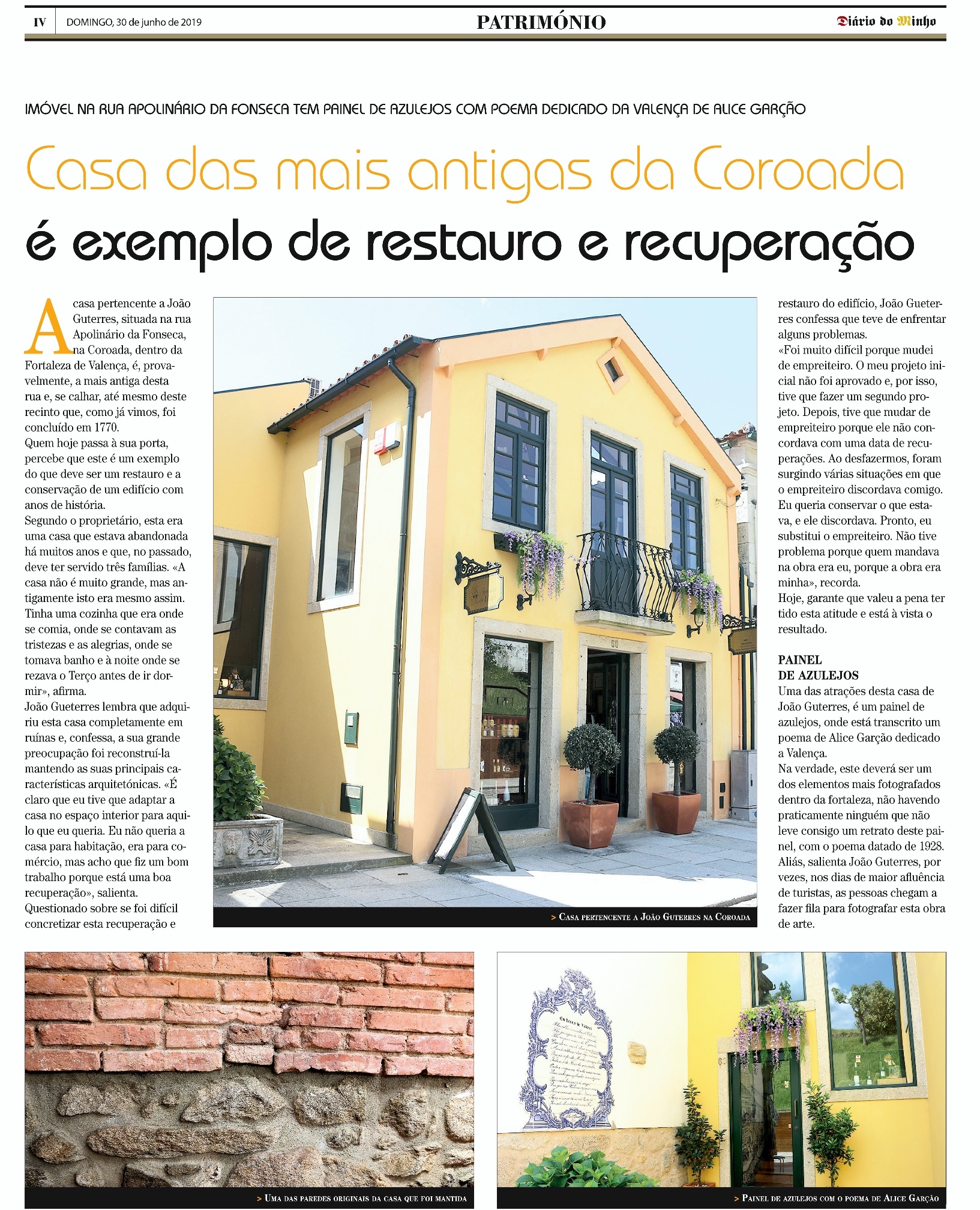HISTORY
Diário do Minho, June 30, 2019
The house where Colonel Porfirio Hipólito Azevedo da Fonseca was born is located in Travessa do Cantinho, in Coroada, which is the most recent area of the whole Fortaleza de Valença do Minho, being today a hostel. Here lived the family of one of Portugal’s illustrious military who was in the First World War, among other great achievements that gave him several decorations and recognitions. It’s a house that we don’t know when it was built, and it will always be after 1770, the year when the Coroada enclosure was concluded. The Coroada, explain Luís Fontes and Belisa Vilar, in the book “Guia da Fortaleza de Valença”, was designed “to ensure the defence of Valença, occupying the highest hill to the south of the village”. “With this external implantation, it was intended to install the military forces separately in the nucleus inhabited by the civilian population and ensure a better defense of the village, because it covered the southern access, the most vulnerable,” add the two archaeologists. Still according to them, the works of the Coroada began around 1661 and finished in 1770. Not far from the house where the soldier was born is the chapel of Bom Jesus, which was also opened to worship in 1770. These dates are then used to help us locate the building of the house we visited, which belonged to the parents of Colonel Porfirio Hipólito Azevedo da Fonseca. By these chronologies we can say that the house will probably be from the end of the 18th century and the beginning of the 19th century. It is a dwelling composed of ground floor and first floor, all made of granite, currently with exterior plaster. At the moment, the house serves as a hostel, and has therefore been the subject of works that, as can be seen, have not altered its exterior. Thus, we can admit that the house, in its essence, should maintain its primitive aspect, denoting, for example, antiquity in the granite staircase that gives access to the first floor. Inside, although we have not entered, we admit, from the photographs that are public, that there have been works that have quite rightly modernised the spaces, valuing the idea of an ecological stay.
(Click on the images to read more…)




